The Full Short Neck Saz Baglama Online Course
Online Course that will make you play like a
pro
World 1st Online Course In English for Saz-baglama
Join me
World 1st Online Course In English for Short Neck Saz-Baglama
Now you can Learn Online by Video. At your own Pace, WHENEVER you want and WHEREVER it is suitable for you.
The short neck course is built for 3 different levels - beginners, advanced and very advanced. In each lesson there are 3 levels of study and each time you can learn more and more.
The melodies you will learn in the course, emphasize Turkish and Kurdish music, but You will learn also about Greek, Arabic, Mediterranean & Central Asian influences. You will also learn how the Saz can be used to enrich Western music skills.
During the course, you will learn how to develop musical improvisations and special rhythms that exist only in this genre of oriental music. You will study special picking techniques used all over Central Asia.
Need an Instrument? Visit our Store for Best Deals & Instruments
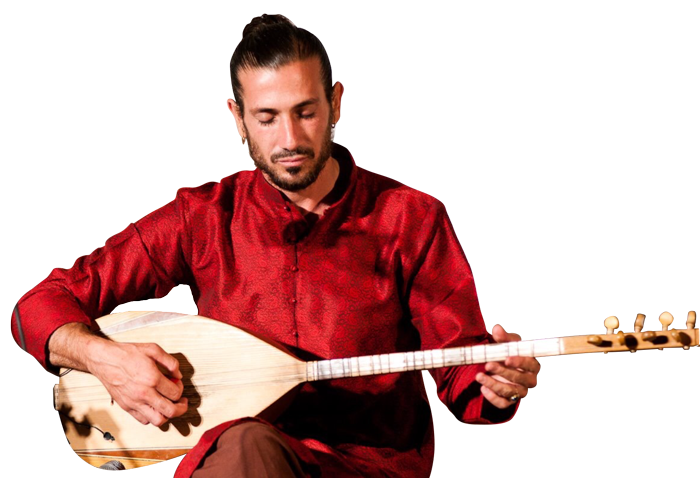
playing saz since
0
Performances
0
Musical collaborations
0
Teaching Saz since
0
students
50
teaching hours
0
'Beginner to Advanced Level'
Learn how to play Saz with Master Musician Yochai Barak
Introduction
A comprehensive introduction to playing the saz
How to approach music in a new way. Instructions for the left handed. Maintenance of the instrument and changing the strings.
Lesson 1
Tuning a short neck Saz
In this lesson we will learn how to tune the instrument .
Lesson 2
Development of basic skills
Basics: how to hold the instrument and the pick. What is unique for the short neck Saz. First 3 musical scales exercises.
Lesson 3
Speed and Style / Husseini
Second important exercise: developing speed and different playing styles on the neck. We will practice the speed and movement of the fingers of the left hand. We will learn a new movement , quarter tones and a new scale - Hosseini , that will serve as the foundation for playing songs and improvisations later on.
Lesson 4
Fingering techniques and Odd rhythms
This lesson teaches us how to move with the pick and the left hand fingers on one of the most important picking technique for the Saz, we will also start to explore the odd rhythms that are a big part of Saz music.
Lesson 5
Lorke Lorke / Kurdistan
A traditional Kurdish song in Husseini Makam , teaches us one of the leading and fascinating playing techniques of the saz. The practice will also help us to perfect one of the special fingering techniques , new chords and how to use the thumb.
The lesson is suitable for three levels of musicians:
The first part is suitable for beginners the second part is suitable for more advanced students and the last part will be for the advanced musicians.
Lesson 6
Dandini Dandini Dastana / Turkish Lullaby
Turkish Lullaby : A charming song suitable for beginners and advanced students. A simple beautiful melody on a new scale in Makam Hijaz. We will also learn the first four steps that will serve us throughout the course. The lesson is divided into 2 levels: Beginners / more advanced
Lesson 7
Zahid Bizi Tan Eyleme / Sufi Tradition
We will learn to play this Beautiful Turkish Sufi song on a different scale in Makam Buselik. This practice will help us obtain new skills for playing in different scales on the Saz. The lesson is divided for three levels: Beginners / more advanced / Advanced
Lesson 8
Omuz Halayi / Turkish folk song
Turkish song: this song consists of quarter notes and chords. This practice will help us obtain new skills for playing new chords , fascinating right hand picking techniques , and new skills using the thumb. The lesson is divided for three levels: Beginners / more advanced / professional
Lesson 9
Tutam Yar Elinden / Turkish traditional
Emotional traditional folk melody: An exciting and delicate song which teaches new sounds and more musical and scale developments. The lesson is divided for three levels: Beginners / more advanced / professional
Lesson 10
Kan Widi / Arabic Haliji
A song from Saudi Arabia : A Haliji traditional famous, rhythmic folk song. The Saz has the ability to connect different musical traditions, different melodies and musical expressions The lesson is divided for three levels: Beginners / more advanced / professional
Lesson 11
Yolcu / Neşet Ertaş
A Turkish song from one of the most famous and important Saz players of the past - Neşet Ertaş. A song on a different scale in Makam Kurd. A charming song suitable for beginners and advanced students. A simple beautiful melody. The lesson is divided for three levels: Beginners / more advanced / professional
Lesson 12
Nowruz / Kurdish traditional
In this lesson we will learn a new song that is played during the new year , the celebrations for the spring in the mountains of Kurdistan. The lesson is divided for three levels: Beginners / more advanced / professional
Lesson 13
Apopse ta mesanychta / απόψε τα μεσάνυχτα / Traditional song from Greece
Mountain music , a beautiful rhythmic song from Greece. This lesson teaches us how to move with the pick and the left hand fingers from a simple melody to very advanced picking techniques. The lesson is divided for three levels: Beginners / more advanced / professional
FAQ's
- The short-neck Saz has 19 frets, high and unique sounds, and a special tuning method that is only played with a short neck Saz. In addition the playing style on a short neck Saz is rich in chords and has special rhythmic musical movements. The Saz is played in a circular manner on the neck using all the strings from top to bottom and bottom to top.
- The long-neck Saz has 23 frets, deep bass sounds and a tuning method that is special to the long Saz. In addition by learning the long neck tuning you are open to more options. There are different and varied additional tunings derived from the basic and traditional tuning for the long Saz. The style of playing on a long Saz comes from a tradition of hundreds of years and extensive knowledge. There are varied melodies and the playing is mainly done horizontally along the neck of the Saz in a special movement from right to left and left to right on the neck.
You can start playing both, the course for long-neck Saz and the course for short-neck Saz are built for beginners and both have all the necessary knowledge to guide you and teach you how to play correctly.
If you already have a Saz then you should start with what you have (short, then proceed to a short one / long then go onto a long one).
If you don’t have an instrument, our recommendation is always to start with the long neck.
The tuning and tension of the strings is different between a long neck Saz and a short neck Saz because of the length of the neck. The length changes the tension of the string and also the unique tuning of each of them is different. Each course is designed for the size of the instrument, the strings will break or be too loose when you try to adjust the long course to the short course and vice versa.
There are specials deals on our website for buying an online course and an instrument together (long or short) with a discount.
If you finished the course for a long neck (or a short neck) – congratulations  .
.
 .
.This means that your foundation is already in place, that you liked the music and the study and that you completed the entire course – it is highly recommended to also take the course for a short neck Saz Baglama (or long neck if you finished the short neck one) . Taking the second course will give you a completely different perspective on the Saz. Suddenly you will learn how to play in a circular way instead of horizontally (and vice versa) , and make completely different melodies in a new and exciting and inspiring tuning. All the new material will come to you relatively easily because the basis of playing is the same and you have already learned it in the previous course. The instrument, the specifications, the scales, and everything you have already learned is yours, and now you can absorb new things without dwelling on the basics. The new course is built for 3 different levels – beginners, advanced and very advanced. In each lesson there are 3 levels of study and each time you can learn more and more.
– Of course, all of the above also holds true the other way around . Those who took the course for short Saz and want to know if it is worth taking the course for long neck Saz it is as well highly recommended. It will be a musical experience and give you new inspiration to see all the music from a different aspect. Even for those who have already finished one of the courses to continue learning more and more will be a gift!
There are 11 lessons in the long-necked Saz Baglama course and 14 lessons in the short neck Saz Baglama course,
Each course has enough material for usually almost a whole year of study.
Both courses have the same amount of materials.
In Turkey there is no difference between the Saz and Baglama.
(Saz can also mean some times : musical instruments in general).
In Turkey they will say for example:
Short neck Baglama, or they will say long neck Baglama.
They will also refer to the same instrument as the Baglama when they say :
Long neck Saz or short neck Saz. Both names refer to the same instrument.
Yes.
Electric saz: as with the electric guitar, there is also an electric saz (usually long neck) that is often played especially in a certain style of music (Arabesk / Arabesque). The basic study of how to play the electric saz is the same as for the regular acoustic Saz so the course is suitable for the electric and acoustic saz. It is always recommended to start learning first on an acoustic Saz so you know the origin of the instrument, The natural sound of it and the traditional knowledge that is played on the acoustic Saz. Afterwards you can switch to the electric instrument.
If you only have an electric Saz you can definitely take the course with it
Yes.
The teaching for Cura is exactly like the teaching for the long/short neck Saz online courses.
The Cura is most suitable for taking the short neck online course.
lower the strings just for the time you’re taking the course , it could sound a bit loose but it’s OK. You can take the course with it and after you finish the course you can bring the tuning back to it’s normal position.
The Cura is usually tuned:
A (la)
(bottom string close to the floor)
D (re) middle string
E (mi) upper string close to the ceiling.
To take the short neck course you should lower the strings, so your Cura will be tuned on:
E (mi)
(bottom string close to the floor)
A (la) middle string
B (si ) upper string close to the ceiling.
Saz Baglama is considered an easy musical instrument to learn how to play.
It’s really a relatively easy instrument to start learning with. It’s comfortable to hold, it has frets and you can play songs on it relatively quickly.
Unlike a wind instrument like a Nay or a bowed instrument the sound from the Saz is heard from the beginning and is easy to produce.
As you progress you will see how much the sound improves. There are special rhythms and scales which create depth in the music. There are also different and special tunings which are fascinating to learn as you progress on.
Regarding how quickly you learn and progress, it is personal. Each person starts from a different background, some have a previous musical background, some have none at all.
So everyone progresses at their own pace.
What is certain is that it is relatively easy to play the Saz, and songs are usually played on it faster than other musical instruments.
More important than talent is patience and persistence.

About Master Saz
Musician Yochai Barak
Yochai Barak is a musician, teacher, producer, and musical director. He has been playing and teaching for over twenty years. He has taught more than 3000 students, both children and adults, in private and group Saz lessons. Yochai has been a teacher for many years in all the major oriental music schools in the country. Every year he creates new workshops, together with masters from Turkey and other international musicians and he is the creator and producer of the famous Saz festival Yochai studied in Turkey for many years, with Master Mehmet Ernler, and Ross Daly. He has performed with noted musicians such as Okan Murat Ozturk, Ross Daly, Mark Eliyahu, Kelly Thoma , Kutla Khan and more... He is the founder of the international band Diwan Saz and has performed at the biggest music festivals in the world, SXSW, Gibraltar, etc.
Master-Musicians Recommend
Ross Daly
Dr. Okan Murat Ozturk
Amir Shahsar
Colleagues & Students Recommend
Yochai is an experienced and patient teacher. He has a rich repertoire and much knowledge which is a real treasure.
He teaches and plays with respect for the age old tradition of playing and learning the saz.
His new digital course is a milestone on his long journey as a teacher and player. This course is produced at the highest technological level.
I strongly recommend it.
Master Piris EliyahuMusicologist & Tar player 
I am really happy I did the course.
It gave me a lot and has been an amazing guide to improve as a saz musician.
Yohai is a wonderful teacher who has dedicated his life to the saz and to passing it on to his students. It is a rare opportunity to learn from such an accomplished musician with so much experience.
The course is laid out very clearly. The video and sound are very high quality. Throughout the lessons, the saz comes to life through the music and stories and wonderful guest musicians. I highly recommend the course for anyone interested in learning the saz or wants to dive deeper.
Shirit Bracha, USAStudent who finished the online course 
Studying with Yochai was very inspirational! The progress I made from lesson to lesson was very apparent. beyond Yochai's talent to articulate the materials studied, he gave me tools to spark my musical imagination in a way that made practice a new kind of joy. The musical compositions he teaches are always intriguing. Genuinely recommended!
Nadav HarelStudent who finished the online course 
Yochai Barak is
one of the top musicians in the field of Turkish and Kurdish music.
As the director of the Makamat Academy, I have been exposed in recent years to Yochai's high abilities in the field of saz music and teaching.
In addition, Yochai established a unique community of his students, consisting of groups of children, youth and adults who delve into these musical traditions through music, study and workshops.
Yochai's very rich experience in teaching Turkish music will carry over to the students who sign up for the online course.
Nissim LugassiDirector of the Makamat Academy of Music from the East 
For a long time I wanted to learn to play on the beautiful instrument: saz.
I was always afraid I would never be able to play it.
This course showed me that it’s possible!
The lessons are especially fun and the teaching method is particularly good.
Yochai teaches at a very high level. There are 2 video cameras that show everything very clearly.The way he teaches the melody and presents the details of each song are wonderful.
Yochai teaches in a relaxed manner while emphasizing the basic principles!
I especially enjoyed and highly recommend this course !!
Lior CohenStudent who finished the online course 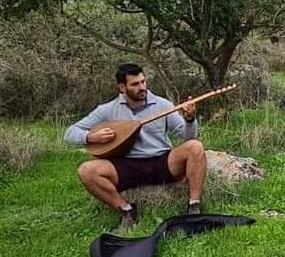
Yochai is an experienced and patient teacher with a rich treasure of repertoire and knowledge. I studied with him for a whole year in the past. With his help I was able to learn and master this magical instrument called the saz.
His new online course is a new milestone on his long journey as a teacher and player. The course was created with the highest technological level. He put in a lot of effort and knowledge and it is highly recommended!
Gilad WeissMusician and Saz teacher 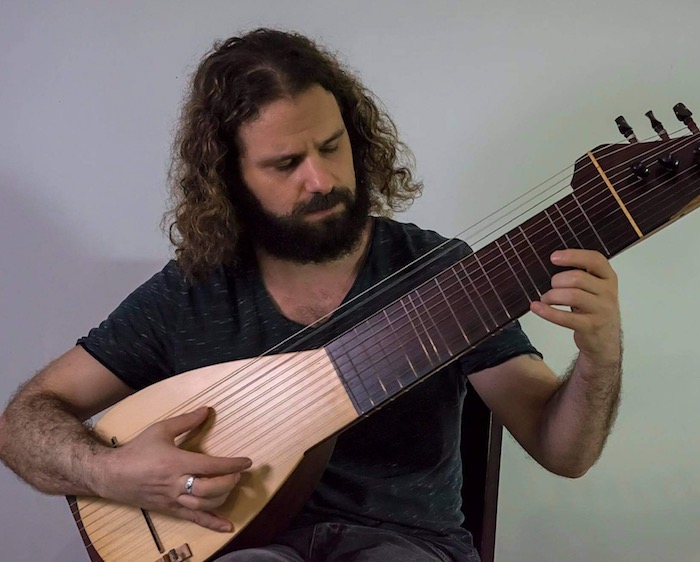
This is the eighth year that my daughter, Odelia, 13.5 years old, has studied saz with Yochai Barak.
Yochai is a rare teacher in his love of playing, and especially in the way he teaches and imparts his musical skills.
He allows each student to fall in love with his or her true rhythm, allowing for tailored and accurate understanding of the instrument.
The saz groups and performances he creates are very exciting.
I have no doubt that the digital course that Yochai has created is of the highest quality. Students can learn and have fun at the same time.
Taron Student 
The online course opened up for me a world of music and inspiration. It gave me the possibility of meeting and playing with other musicians.
Yochai's method connected me both to the saz and to music.
Yochai managed to convey the basics in a very professional way .without shortcuts which helped my progress very much.
Today I can play with other musicians. It's a magical and fun world.
What's interesting about Yochai's approach is that every musical piece will always be refined in order to reach a better level.
Anyone who joins this online program will not regret it, it is highly recommended
S. DormaStudent who finished the online course
Yochai Barak taught at our Music school as a Saz and Baglama teacher for 12 years.
I recommend Mr. Barak as a teacher with in-depth and extensive knowledge of the saz and classical Turkish music. I also recommend him as an educator, rich in experience and impressive teaching ability.
I have no doubt that everyone who studies with him will enjoy and receive the best in the field.
Dr. Avi ShoshaniArtistic and Pedagogical Director of the Center for Oriental Music 
I highly recommend Yochai as a teacher and also his course. I’ve had a personal and deep relationship with him for over 20 years. My three daughters have all studied with him.
Yochai brings his musical knowledge and his spirit to each lesson. He knows how to give each and every student the right encouragement and support thus enabling them to realize their abilities in the best way. Yochai brings much more than his technique of playing - he brings his enthusiasm, optimism, and love of life. These are the most powerful instruments which allowed my daughters to make a connection with the saz and the world of music.
This course provides basics in getting to know the saz and opens a door for a new path for the future
Anat Student 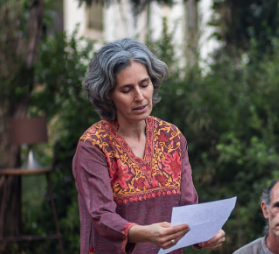
Yochai Barak was my Bağlama teacher for the three years I spent in The Center for Middle-Eastern Classical Music.
His passion, knowledge, and connection to the Bağlama were and are an inspiration for me and the countless students he has taught in his long career. I found him a dedicated teacher, a passionate musician, and a true advocate for the Bağlama culture. He will be a blessing to those who study with him.
Anomarel OgenMusician and Saz teacher 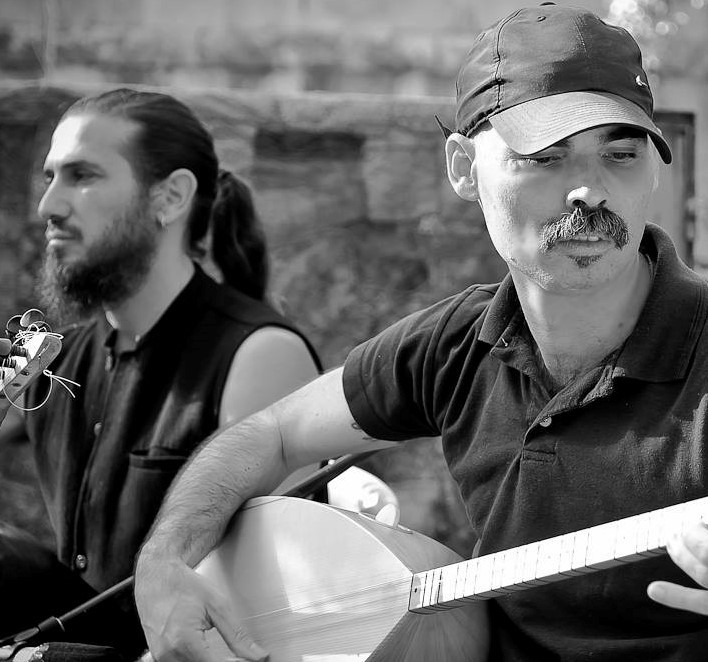
I took saz lessons with Yochai, even though I am mostly a bassist. I immediately connected with a person and a musician who has deep knowledge and ability to convey the music and instrument to you. With much love I highly recommend this course
Jacob SegalSaz & Strings player, musician 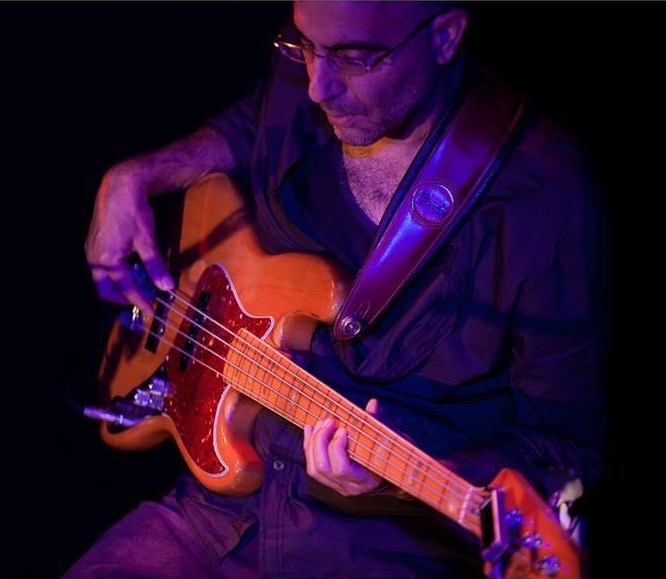
Yochai teaches Saz with patience and skill, and the lessons are full of inspiration. The digital course is thorough and suits musicians of all levels.
With all my heart I truly recommend Yochai as a teacher.
Meidan vishinskyStudent who finished the online course 


